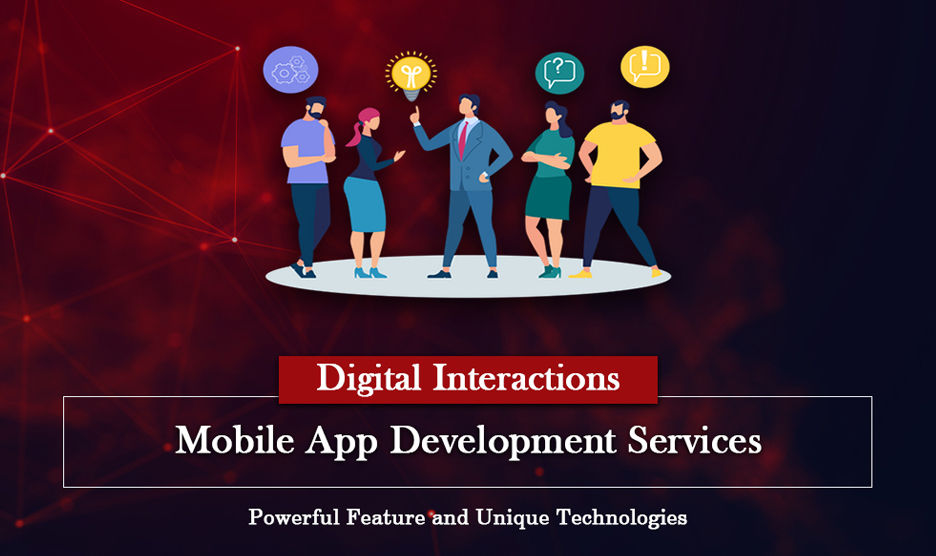
WE ARE EXPERT IN WHAT IT TAKES TO GENERATE BUSINESS FOR A SHOPPING WEBSITE, FOCUSED AND EXPERIENCED PROFESSIONAL.
Digital interactions are becoming increasingly commonplace in our everyday lives. We use them to communicate with friends, family, and colleagues; to stay up-to-date on the latest news and information; and to access a wealth of online resources.
As mobile devices become more and more prevalent, it’s no surprise that mobile app development is becoming a sought-after skill. If you’re thinking about developing your own app, this article will give you an overview of the process, from start to finish.
Digital Interactions
Digital interactions are the future of mobile app development. By using digital interactions, businesses can create unique customer experiences that cannot be found anywhere else. This is why businesses should focus on developing digital interactions for their mobile apps.
Introduction
In today’s digital world, it’s more important than ever to have a strong online presence. And one of the best ways to do that is to develop a mobile app. But what goes into developing a successful mobile app? In this article, we’ll explore the basics of mobile app development, from ideation to design to development and launch.
What are digital interactions?
Digital interactions are the ways in which people interact with technology. This can include anything from using a computer to browse the internet, to using a mobile app to book a taxi.
Digital interactions have become increasingly important in our lives as we rely more and more on technology. Mobile apps are one of the most popular ways to interact with technology, as they allow us to do things like check the weather, order food, or book a hotel room from anywhere in the world.
Digital interactions are not only limited to human beings; businesses are also interacting with their customers through digital channels such as social media, chatbots, and website live chats. This allows businesses to provide a better customer experience by offering quick responses and 24/7 availability.
The benefits of digital interactions
Digital interactions offer a number of benefits over traditional face-to-face interactions. They can be faster, more convenient, and more cost-effective. Additionally, digital interactions can help to build and maintain relationships between people who are geographically separated.
The challenges of digital interactions
Designing digital interactions can be a challenge, especially when it comes to mobile app development. There are a few things to consider when designing digital interactions, such as user experience, cross-platform compatibility, and data security. Let’s take a closer look at each of these factors.
User experience is important when it comes to digital interactions. The goal is to design an interaction that is easy and intuitive for the user. This can be tricky, as there are often many different ways to accomplish the same task. It’s important to find the right balance between simplicity and functionality.
Cross-platform compatibility is another important consideration when designing digital interactions. With so many different devices and operating systems out there, it’s important to make sure your interaction will work across all platforms. This can be a challenge, but it’s important to consider if you want your interaction to be used by as many people as possible.
Data security is an important concern when it comes to digital interactions. When dealing with sensitive information, it’s important to make sure that your interaction is secure. This means using encryption and other security measures to protect the data.
These are just a few of the challenges that come with designing digital interactions. With careful
How to overcome the challenges of digital interactions
When it comes to digital interactions, mobile app development can present some unique challenges. In order to overcome these challenges and create a successful app, developers need to be aware of the potential issues and how to address them.
One of the biggest challenges is designing for a variety of screen sizes and resolutions. With so many different devices on the market, it can be difficult to ensure that your app looks good on all of them. One way to overcome this challenge is to use responsive design techniques that automatically adjust the layout of your app to fit the screen size.
Another common challenge is dealing with network connectivity issues. Mobile apps need to be able to work offline as well as online, which means they need to be able to sync data between the two. This can be a difficult task, but there are various tools and techniques that can help make it easier.
Finally, security is always a concern when it comes to digital interactions. When you’re dealing with sensitive user data, you need to make sure that your app is secure and that data is protected from hackers. There are a number of measures you can take to improve security, such as encrypting data and using secure authentication methods.
Conclusion
In conclusion, mobile app development is a complex and ever-changing field. There are a variety of factors to consider when developing a mobile app, from the initial planning stages to the final launch. However, by keeping up with the latest trends and best practices, you can create an engaging and successful app that will resonate with users.